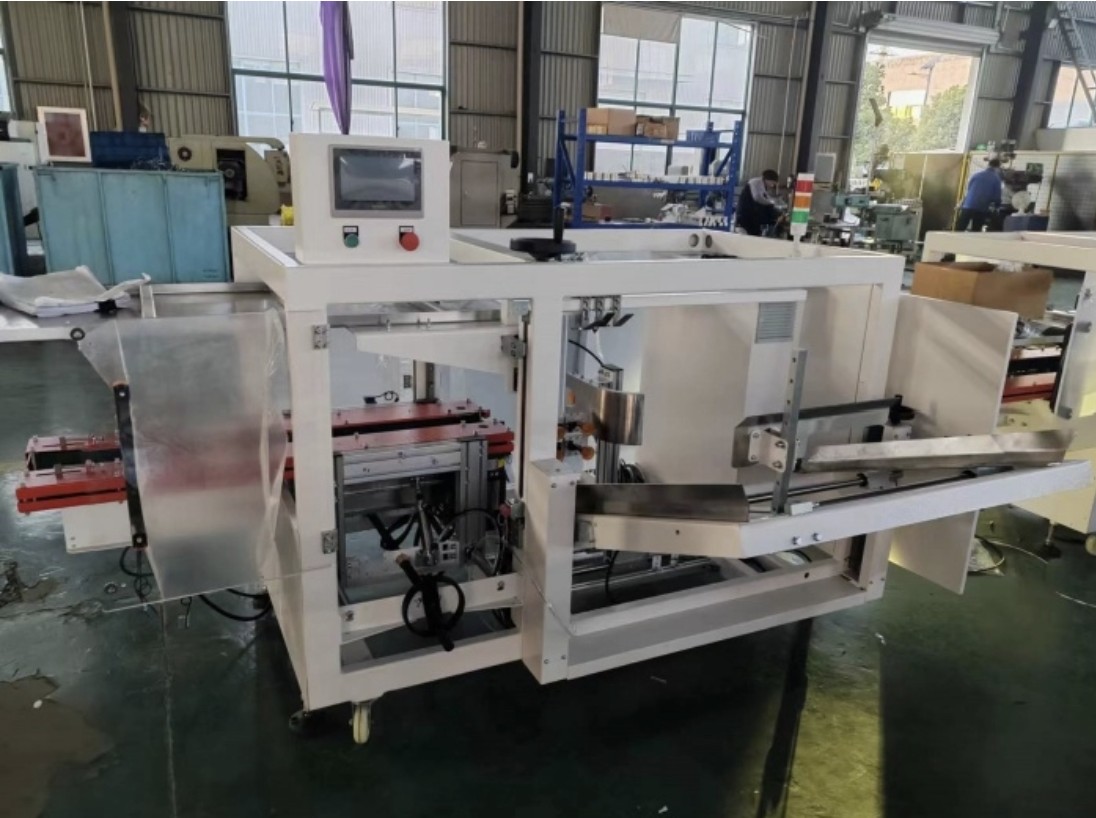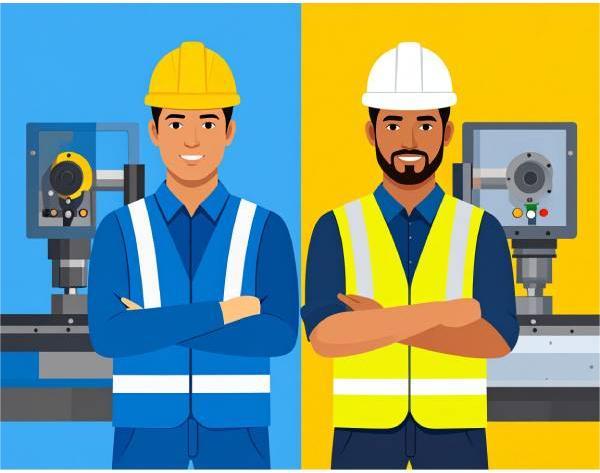Every second counts on the packaging line. Slow, manual box forming can bottleneck your entire operation. So, what is better for your business: a case former or a case erector? Choosing the right machine boosts speed, saves costs, and reduces labor. In this post, you'll learn the difference between case former and case erector, and which fits your needs best.
1. What Is a Case Former?
a. Definition and Function
A case former is a semi-automatic machine used in packaging lines. It transforms flat cardboard blanks into open, three-dimensional boxes. You'll need someone to load each blank by hand. The machine folds the box into shape, but sealing comes later. It's often the first step before products go inside. Key Features
Takes flat, creased cardboard and folds it into box form
Always requires an operator to feed and start the process
Often paired with a separate case sealer machine
| Feature | Case Former |
Box Folding | Yes |
Box Sealing | No (needs external sealer) |
Automation Level | Semi-automatic (human involvement) |
Operator Required | Yes |
b. Ideal Use Cases
Case formers shine in small to mid-sized operations. They're great for slower lines or businesses on a budget. Need flexibility? They work well for mixed box sizes. Startups and growing businesses often prefer them for simplicity. If you pack under 500 boxes per hour, a case former could fit perfectly.
2. What Is a Case Erector?
a. Definition and Function
A case erector is a fully automatic machine that builds boxes fast. It pulls flat blanks from a magazine, folds them, seals the bottom, and sends them out. No one needs to stand by and feed it. Once it's running, it handles everything from loading to sealing. Just keep the magazine stocked and let it work.
Take "Long Term" fully automatic case erector as an example, it can automatically finish the work of carton opening, shaping, folding and sticking adhesive tapes.

b. Key Features
Pre-loaded magazine holds hundreds of flat cartons
Automatically folds flaps and seals the bottom with tape or glue
Needs zero hands-on help during operation
| Feature | Case Erector |
Box Folding | Yes (automated) |
Box Sealing | Yes (tape or glue) |
Automation Level | Fully automatic |
Operator Required | No (except maintenance/refill) |
c. Ideal Use Cases
Case erectors work best in high-speed packaging environments. Need thousands of boxes sealed per hour? This is your tool. They're designed for 24/7 operations, handling volume without breaks. Factories and large logistics centers use them to scale efficiently. If you ship large orders daily and want minimal labor, this machine makes sense.
3. Case Former vs Case Erector: Key Differences

a. Automation Level
Case formers are semi-automatic, so they need help from an operator. Case erectors are fully automatic, handling everything once loaded.
b. Speed and Throughput
Formers: 10–30 cartons/min Erectors: 30–200+ cartons/min
| Machine Type | Speed (Cartons Per Minute) |
Case Former | 10–30 CPM |
Case Erector | 30–200+ CPM |
c. Labor and Supervision
Formers need manual feeding and adjustment. Erectors require minimal staffing but more technical know-how.
d. Cost of Ownership
| Machine Type | Cost Range |
Case Former | $10K–$50K |
Case Erector | $50K–$200K+ |
Formers are cheaper upfront. Erectors save on long-term labor and efficiency.
e. Space and Footprint
| Machine Type | Average Space Needed |
Case Former | 100–200 sq ft |
Case Erector | 300–1000+ sq ft |
Erectors need more room for feeders and conveyors.
f. Complexity and Maintenance
Formers allow tool-free changes and are easy to run. Erectors use PLCs and HMIs—great performance but need skilled setup.
4. Decision Guide: Which One Should Your Business Choose?
a. Production Volume Considerations
Packing under 500 cartons per hour? A case former works well. Handling thousands? Go with an erector for speed and consistency.
b. Budget and ROI
| Machine Type | Budget Range | Ideal ROI Scenario |
Case Former | $10K–$50K | Short-term savings |
Case Erector | $50K–$200K+ | Long-term productivity gains |
Start with a former, scale up when demand grows. Erectors pay off with long-term speed and savings.
c. Floor Space Limitations
Formers fit into tight spots. Erectors need more space—plan ahead for expansion.
d. Desired Flexibility vs. Consistency
Formers are great for custom box sizes. Erectors excel when precision and uniformity matter most.
5. Industry Applications: Who Uses Which?
a. E-commerce and Retail
Case formers are popular here. They handle varied order sizes and frequent size changes well. Retailers love the hands-on control and low cost.
b. Food and Beverage
Case erectors dominate food lines. Speed, sanitation, and 24/7 flow are key advantages.
c. Pharmaceuticals
Erectors meet strict accuracy and quality standards. They ensure proper sealing and traceability every time.
d. Manufacturing and Logistics
Big operations run on automation. Case erectors link with conveyors and robots for high-volume output.
| Industry | Best Fit Machine | Why It Works Well |
E-commerce & Retail | Case Former | More control, lower cost, flexible sizes |
Food & Beverage | Case Erector | Speed, sanitation, continuous flow |
Pharmaceuticals | Case Erector | Accuracy, compliance, repeatability |
Manufacturing | Case Erector | Full automation, bulk production |
Logistics | Both | Depends on volume and workflow needs |
6. FAQs
Q: What is the difference between a case former and a case erector?
A: A case former folds boxes with some human help, while a case erector fully automates forming and sealing.
Q: Which is more affordable: case former or case erector?
A: Case formers are more affordable, typically costing $10K–$50K versus $50K–$200K+ for case erectors.
Q: How many boxes per minute can each type handle?
A: Case formers handle 10–30 boxes per minute; case erectors reach 30–200+ boxes per minute.
Q: Can a case former be upgraded later?
A: Yes, many operations start with a case former and later add sealers or upgrade to erectors.
Q: What technical skill is required to operate a case erector?
A: Operators need basic knowledge of PLCs and HMIs for setup, monitoring, and minor troubleshooting.
Q: Is a case former suitable for custom box sizes?
A: Yes, it's ideal for flexible runs and quick manual adjustments between different carton sizes.
Q: How much space does each machine type require?
A: Case formers need 100–200 sq ft. Case erectors require 300–1000+ sq ft due to conveyors and feeding systems.
7. Conclusion
As automated packaging lines gain popularity, e-commerce shipments increase, and packaging materials become more environmentally friendly, technologies like modular case openers, high-speed molding systems, and intelligent vision technologies will gradually emerge in order to improve efficiency and decrease downtime in the future. Long Term also strives to offer customers better and better quality products using the latest technological developments.
Pick based on your daily volume and budget. Check how much space you have on the floor. Think about how fast you want to grow. Choose the right carton forming machine to boost your packaging process today.














